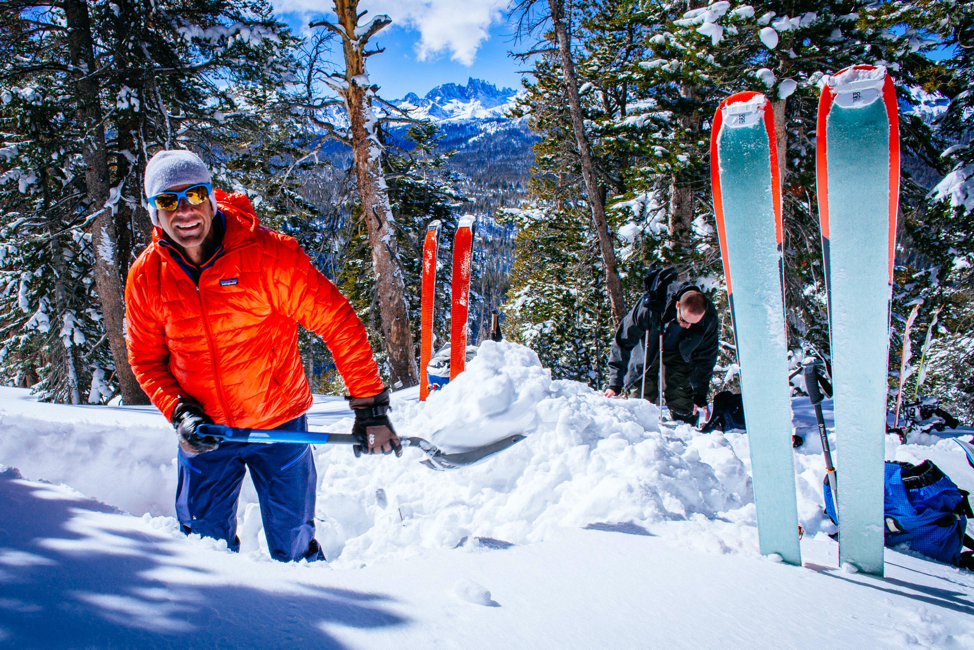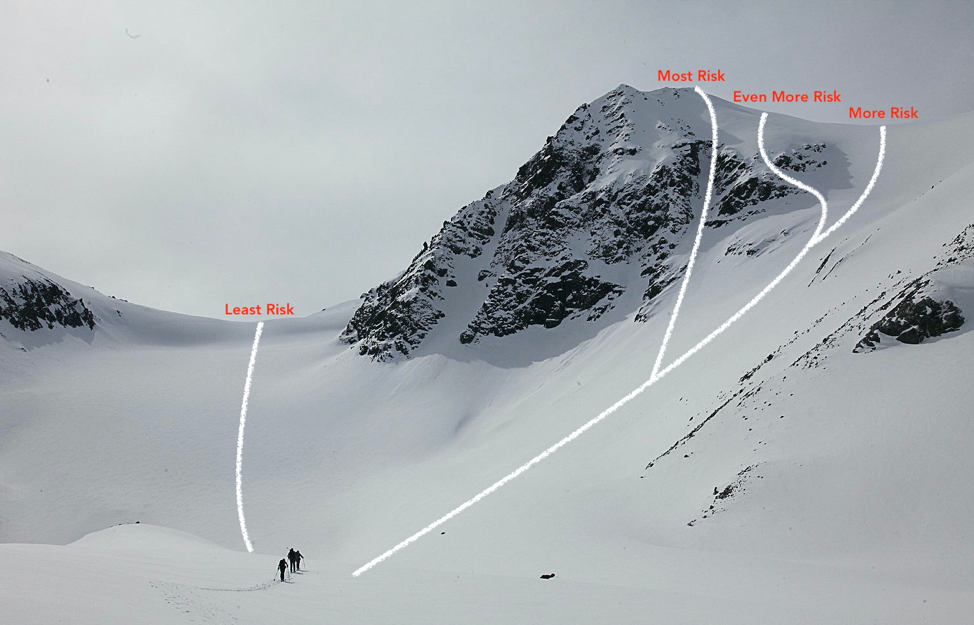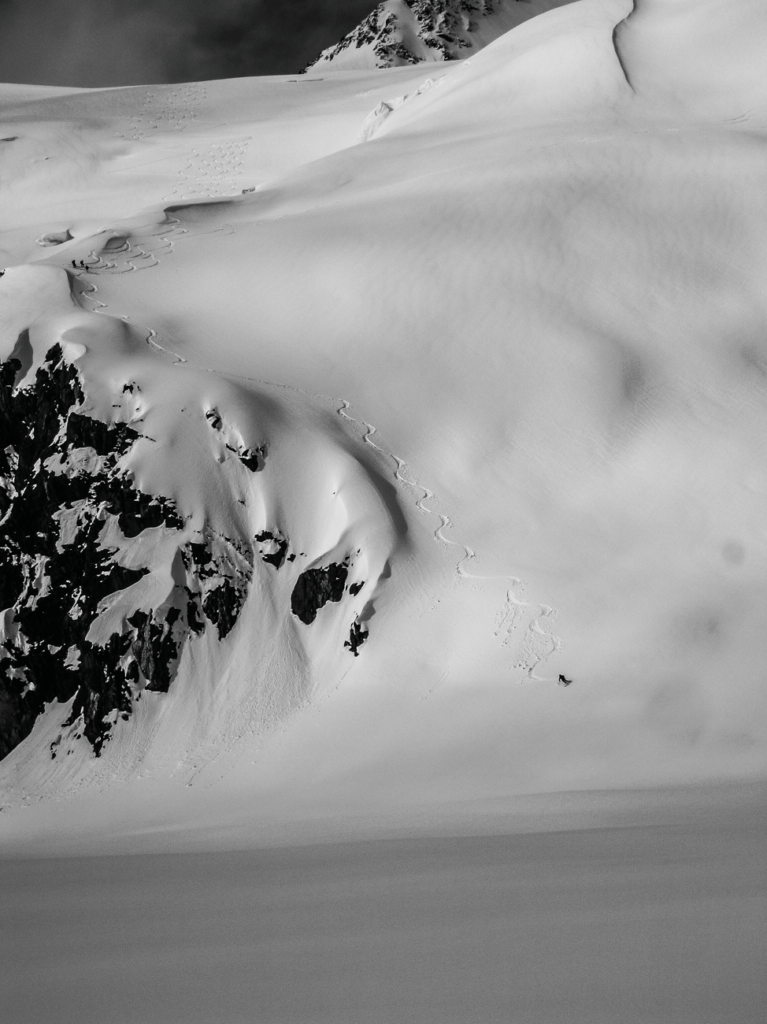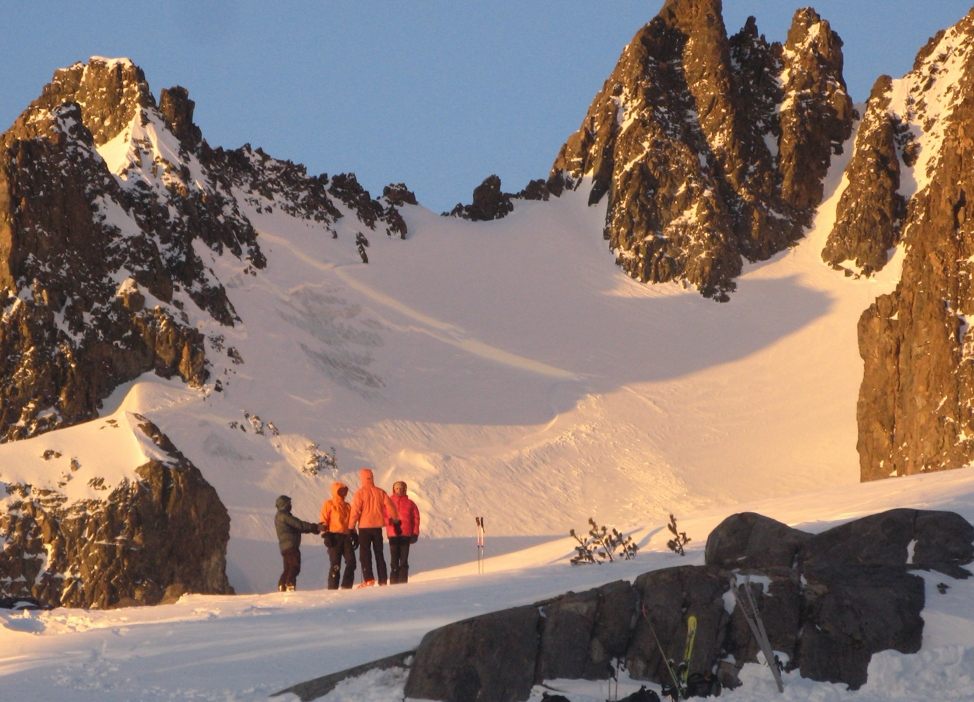Managing Uncertainty in the Backcountry
We were dropped off by plane in the middle of one of the most remote and inaccessible backcountry ski venues on the planet, the Wrangell-St. Elias National Park in Alaska. We were tiny specks on an unfathomable glacier. The upper lobe where we stood barely showed up on our map, but it measures roughly the size of the biggest glacier in Europe. Nobody had been there recently. Nobody had been skiing the peaks in the area ever. There was no beta, no guidebooks, no avalanche information center. You could accurately say that our team had a high level of uncertainty about the risk factors that would affect our ski mountaineering trip.
Uncertainty is not exclusive to being in remote and untrammeled hinterlands. It is a component of even the most pedestrian days of backcountry recreation, for all of us. As I started to teach a recreational Level 2 avalanche course recently, it became apparent that the students were there to reduce their backcountry risk. Uncertainty is always a component of risk. By increasing knowledge and integrating it into the decision-making processes, these students hoped to reduce uncertainty and increase confidence in their decisions. What they had yet to realize is the more we learn, the more we become aware about how uncertain we are. The difference between a backcountry novice and expert isn’t simply a greater understanding of the theory and science of avalanches. It is confidence in one’s ability to manage uncertainty as a way to manage risk.
In the study of risk management, uncertainty is defined as: a “state (even partial) of deficiency of information related to understanding or knowledge an event, its consequence, or likelihood” (ISO, 2009). In simpler language, uncertainty is not knowing everything about the risks we choose to take out in the mountains.
Conventional wisdom suggests that complete understanding of the risk should lead to the ability to make accurate decisions and avoid undesirable outcomes. The truth is, though, our perception can never give us a complete, accurate picture. On any given day in the mountains, there is critical, unknowable information that we proceed without. Herein lies the uncertainty. It can never be fully eliminated.
The dangers of uncertainty are clear. If we drop in on a familiar slope convinced that it won’t avalanche, and we are wrong, the result could be catastrophic. We have human tendencies and biases that come alive in the face of uncertainty and threaten to influence our decision making in dangerous ways, sometimes even unconsciously. We want to feel confident and assured in our actions when our lives are at stake. We also want to recreate in avalanche terrain. Uncertainty undermines our feeling of confidence and tells us not to go places and do things we want to. It’s tempting to tune it out and ignore it. Instead, it’s best to learn to listen to and manage it.
Here are four proven effective strategies to manage our uncertainty in the mountains:

The author gathering baseline information about the snowpack to better understand the avalanche problems across terrain. Photo by Kyle Queener.
1. Gather More Information
Though we can’t entirely eliminate uncertainty, we can aim to reduce it. Gathering information can start in advance of the season with tracking the snowpack development and avalanche hazard, and connecting with potential team members to develop a shared vision and mutual understanding. Looking at the local avalanche advisory regularly and understanding the ebb and flow of avalanche problems and danger levels helps to increase situational awareness for our days in the field.
We can catalog and map terrain options using various online resources and guidebooks to gain familiarity with different recreation zones, venues, and run options. Before a tour starts, identify critical gaps in understanding and make a plan to target them with relevant observations. Our plan to gather information might affect our route, allowing access to vantage points or test slopes with certain snowpack characteristics. It is important to be mindful that our aim to gather relevant information could cause us to expose ourselves to the very avalanche risk we are uncertain about. The more variability there is in the snowpack, the more difficult it is to achieve or ascertain relevance without being exposed to specific slopes in question. Even if we were to unwisely accept the risk to gather information on a questionable slope in an avalanche path, the various observations and tests we can perform will only be conclusive if an avalanche occurs, perhaps with us in it!
We should recognize that sometimes gathering information leads to more questions than answers. This leads to more uncertainty. We’ll never be able to fully know everything about the risk. That is why we need to manage uncertainty with other strategies as well.

2. Create and Maintain Options
The primary tool we use to manage risk in the mountains is our terrain selection. Our route through the terrain should express everything we think we know, and don’t know, about the risk. Risk is a function of the likelihood and potential consequence of a destructive event. One of the most important ways we can manage uncertainty about the risk is to create options. We can attempt to gather enough information to raise our team’s confidence about our planned route before entering an exposed position, but if we don’t (and often we can’t), it is a good idea to have numerous alternative options easily available that we can be more confident about.
With avalanche terrain assessment skills and an understanding of the anticipated avalanche problems, we are able to compare the relative likelihood and consequences of potential avalanches along different routes of travel. This allows us to sort terrain options from most to least risky based on our analysis.
Maintaining options is an important concept that starts with trip design. As we choose some terrain options, others get eliminated or at least made less easily available to us. If we can maintain availability of terrain options we feel more confident about as long as possible, we can adapt to new information, and more easily respond to changes in our group’s uncertainty level. A classic way to do this in the backcountry is to climb up a slope that we are confident about, that we also deem a good option to descend.
Some terrain is well-suited for maintaining options, and some is not. Learn to identify these terrain characteristics. Some routes are difficult or dangerous to modify or reverse to reduce risk. Such complex and committing terrain choices are best reserved for days and teams with the highest confidence and lowest amount of uncertainty. The back-pocket terrain option we often keep ready is to pull the pin and abort the plan. The ability to exercise restraint in that moment, turn around, and wait for a better day should be lauded as a victory. Hopefully though, as we improve our ability to better create and maintain options, we can make such tough binary “go/no go” decisions more infrequent.
I often find that the most important terrain decision of the day is the choice of where to enter the backcountry. We typically have the greatest number of options at this point in the tour. We should choose a venue or drainage that offers enough mobility and appropriate options for the conditions and the group in order to set ourselves up for success, as opposed to fixating on a single slope or objective when we are uncertain.

On this day in the Chugach range in Alaska on a Ski Guide’s Course, we managed snowpack uncertainty caused by a discovered layer of buried facets. Our team built in a margin for error with careful terrain use, group management, and an early start. Another group in the same area started their tour later, and a skier triggered a slab avalanche on that layer as the slope was hit by the strong morning sun. Fortunately, they had built in other margins for error, and there was no unfortunate consequence that day. There was a lot of learning, though!
3. Build in a Margin for Error
When we acknowledge uncertainty, we acknowledge that the decisions we make in our best interest could prove to be wrong. Being wrong could result in being hurt or killed. The backcountry may or may not forgive our mistakes, and it won’t hold our hand through the learning process. What it teaches us might well be our final lesson learned, an epiphany on our last ride down the mountain.
That is why we have to train ourselves to ask in advance, “What could happen if we are wrong?”
A margin for error can also be described as the space to be fallible, or an allowance for the unknown. We should understand that even the most experienced and knowledgeable practitioners get surprised with appalling regularity. It is a good idea to imagine the realistic worst-case scenario, and do everything possible to avoid it.
Building in a margin for error can refer to creating safety buffers in the terrain, or choosing/avoiding specific terrain features or configurations on a slope to reduce likelihood or consequence of an avalanche. Using travel techniques such as spreading out, going one at a time, and creating strategic regrouping points are other common ways we can build in margin for error. Starting earlier (with coffee perhaps) is an easy way to build in a margin for error, as there will be more daylight to employ our other three strategies here or to deal with issues that may arise. Early starts and finishes are key margin-building strategies to deal with time-related avalanche hazards related to spring thaw instabilities or other rapid deteriorations of conditions due to incoming weather.
Days in the mountains are like snow crystals, no two are exactly the same. We need to consider our situation day by day, continually ponder the potential consequences of our errors, and build in margins for them. Because being wrong is a lot like buying a new beacon, shovel, probe, and airbag this season—we can’t afford it, but we are going to do it anyway. A close mentor of mine years ago said, “You can’t expect to be right all of the time in this business. You just have to be right enough.”

Communicating about the risks and uncertainties in the heart of the High Sierra, California.
4. Communicate!
Our risk- and uncertainty-management systems should employ the power of teams to make good decisions. It is proven that teams of people function better than individuals in high-risk environments. Avalanche professionals rely on structured team-communication strategies and checklist-based systems in their processes. As recreationists, we should similarly structure our process. We want to make sure everyone on the team is on the same page before, during and after a trip to the backcountry. A recreational avalanche course is a great way to learn a reliable framework for communicating throughout trip planning, field decision making, and trip debriefing.
The key in communication is that we adopt a shared mindset and strategy for the day. Our conversations and the social dynamics we create should be contextualized by this mindset and strategy. We like to say, in the backcountry, everyone on the team has a voice. This means everyone should contribute to the management of the risk, in both actions and words. Everyone should have the power and freedom to veto any decision. We should be encouraged to challenge one another’s assumptions. We should be able to bring our trip-planning process into the field, to relentlessly call those assumptions into question throughout the day.
Whenever I am uncertain, I make a point to communicate more with my companions or with my colleagues. When I have a feeling of discomfort with a decision, I talk about it. A close friend of mine was killed in an avalanche when a team member wasn’t able to express their uncertainty and apprehension prior to the accident. Communicating is the process by which we enact the other three strategies here. Don’t underestimate its power to improve team decision-making in the backcountry.
Closing Remarks
Uncertainty is inherent to our snowy mountain activities. Rather than seeing it as an impediment, we should become comfortable with it as a constant companion. After all, we can’t have adventure without at least a little bit of risk and uncertainty. If we can learn to manage it, we can extend our lifetime of mountain adventure to the fullest!
Howie Schwartz is an IFMGA mountain guide and educator, and co-owner of Sierra Mountain Guides. He has worked with over 6,000 recreational and professional students on avalanche and ski-guiding courses since 1995. He lives and adventures from his home in Bishop, Calif.


